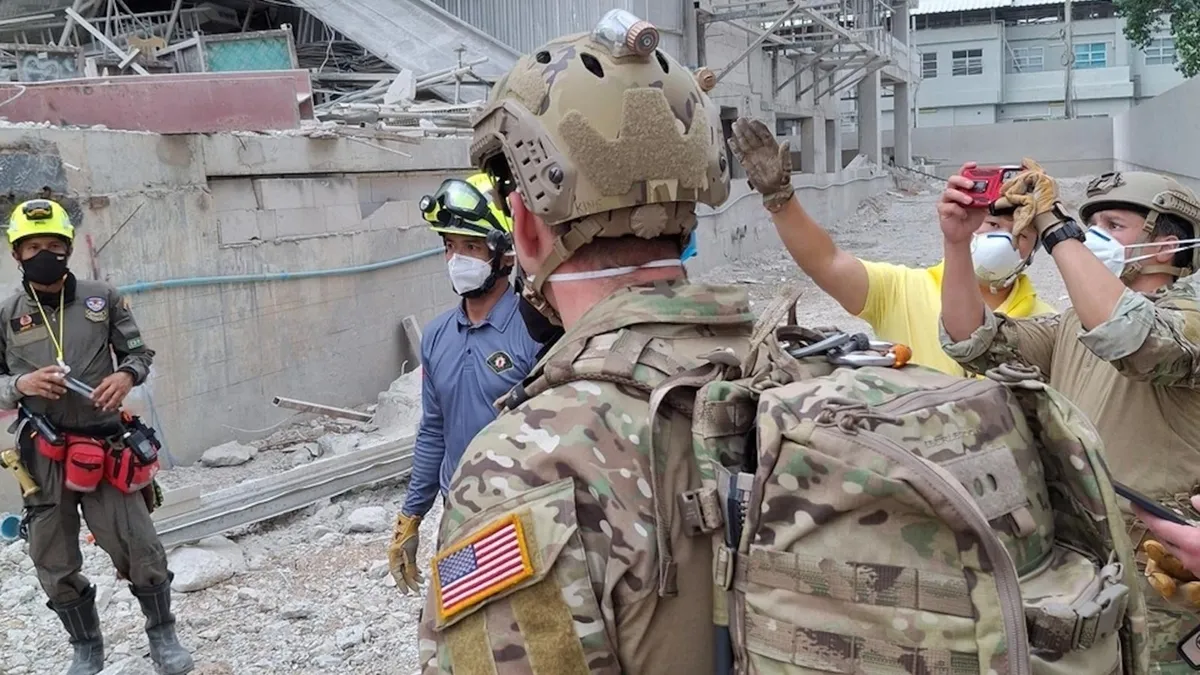
As a dedicated team of U.S. experts prepares to travel to Myanmar to aid in recovery efforts following the devastating earthquake that claimed the lives of over 2,000 people in Southeast Asia, international support is swiftly mobilizing. Notably, teams from China and Russia are stepping in to fill the gap during the U.S. response. On Monday, the U.S. government announced a commitment of $2 million in aid and dispatched a small team from the U.S. Agency for International Development (USAID) to evaluate the situation on the ground. However, as of Monday morning, officials indicated that they had not yet been able to enter Myanmar.
The initial aid amount pledged by the U.S. aligns with past commitments but reflects a slower response compared to previous disasters. For instance, following the 2023 earthquake in Morocco, a USAID Disaster Assistance Response Team (DART) was deployed within hours. Similarly, during the catastrophic flooding in Libya that same year, DARTs were active on the same day. The U.S. also mobilized quickly after major earthquakes struck Turkey and Syria, launching DART teams just hours post-disaster. In these instances, while DARTs took several days to reach affected areas, the overall speed of response was notably quicker.
The U.S. response is occurring amid President Donald Trump’s initiative to reshape the federal government, which includes significant cuts to USAID. These cuts have led to the furlough of thousands of employees, the termination of funding for over 80% of USAID's programs, and the closure of its headquarters. While these changes are currently being contested in several court cases, the State Department recently announced the formal dissolution of USAID, citing its intention to absorb many of its functions.
Despite claims from the State Department that the recent cuts to USAID have not hindered earthquake response efforts, officials acknowledge that there have been logistical challenges due to the reorganization. “I would reject the notion that this is obviously a result of the USAID cuts,” stated State Department spokesperson Tammy Bruce on Monday, adding, “We’re certainly in the region.”
In the interim, Chinese response teams have been notably swift, arriving just 18 hours after the earthquake. Currently, over 400 Chinese personnel are on-site, with China dispatching planes loaded with supplies and pledging $14 million in aid. This rapid response positions China as a reliable partner in times of crisis, reinforcing its diplomatic presence in the region. Chinese Foreign Ministry spokesperson Mao Ning shared updates via social media, showcasing images of Chinese workers actively involved in rescue operations, emphasizing the theme of “China, a friend in need.”
At the site of a collapsed 34-story building in Bangkok, U.S. military personnel have been seen collaborating with Israeli forces in search and rescue operations. Utilizing advanced drone technology to access areas perilous for human rescuers, the teams are making strides in recovery efforts. Volunteer Choktong Issarangkool, who is also serving as a translator for the American teams, expressed gratitude for the American assistance, noting the longstanding tradition of U.S. aid being among the first to arrive after natural disasters in the region.
State Department officials are currently in discussions regarding a more comprehensive response to the earthquake, including the potential deployment of a DART team, though it may be smaller than those sent in past emergencies. “Our disaster experts, based in locations like Bangkok, Manila, and Washington, D.C., continue to monitor the situation and coordinate with U.S. government counterparts in the region,” Bruce stated. She highlighted that the initial $2 million in support would be distributed through partner organizations already active in the affected areas, ensuring that aid reaches those in need as quickly as possible.